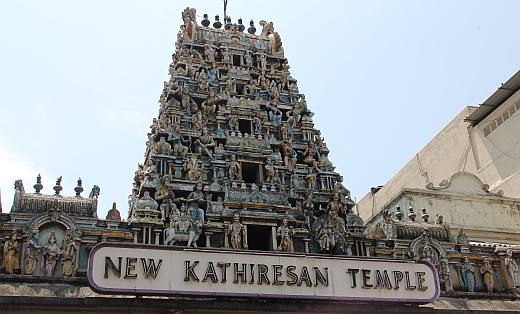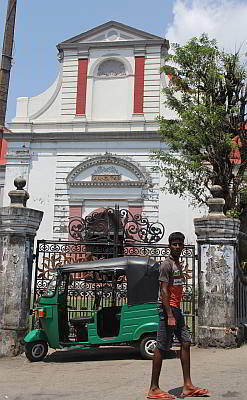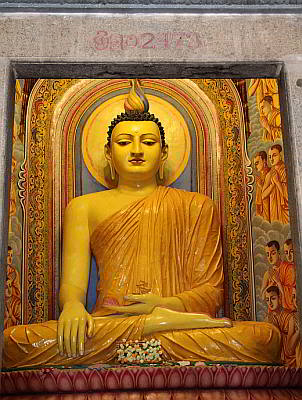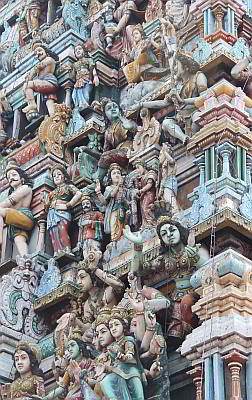By Adam Brown
There are places that end up on most people’s travel wish list, like Rome, Paris and Venice. These are the kind of cities known all over the world for their offerings of food, shopping and sightseeing. Since my wife Anna and I work in a cruise ship, we have traveled to over 50 countries in the past six years and get to visit those kinds of places regularly. But we’ve also gone to places off the beaten path.
One of such places that we recently visited was Colombo, Sri Lanka.
A quick background on Sri Lanka: It is a tropical, island nation nearest to India. It was a British colony for almost 150 years until it gained its independence in 1948. The country was called Ceylon (where the tea got its name) until 1972. Sri Lanka is the oldest democracy in South Asia.
The country in 2009 finally saw the end to a 30-year bloody civil war which resulted in the deaths of between 60,000 and 100,000 people as the Sri Lankan government found itself against Tamil rebels.
The capital city of Sri Lanka is Colombo, which has over four and a half million residents.
For this Colombo trip, Anna couldn’t join me as she had work and port manning duty. (Port manning is a scheduled rotation of crew members to make sure there are enough people on board in case of an emergency.)
To see as much of the city as possible, I took a traditional tuk-tuk or trishaw to get around.
Cars might be faster, but it’s much easier to maneuver around the crowded, busy streets inside a tuk-tuk. The streets are busy with motorcycles, tuk-tuks, bicycles, cars, taxis and buses.
The streets are lined with vendors selling everything from newspapers to fruits and everyone honks their horns. A honk of the horn can mean anything from hello to caution to move out of the way.
The first thing that struck me is how many different religions exist in one city. While they might have recently ended 30 years of civil war, the war was mostly political in nature.
The four major religions get along pretty well in such a cramped city. It’s obvious as the places of worship are often just down the street from one another.
In one afternoon I visited a Catholic church, a Buddhist temple, a Hindu temple, and a Muslim mosque.
The dominant religion is Buddhism, which makes up 70 percent of the population. Next is Hindu at 13 percent, then Muslim at 10 percent, and Christians/Catholics make up just above 7 percent.
Just as in the Philippines, Western colonists brought Catholicism into the country in the 16th century, mostly through the Portuguese.
Sri Lankans are very proud of their religions as was noted in a poll in 2008—the country was named the third most religious country in the world and 99 percent of those who responded said that religion was an important part of their daily life.
In a world where wars are fought over land and religious differences, it was refreshing to see people living side by side in peace.
Another noticeable thing was the similarity of Sri Lanka and India. It should be obvious as Sri Lanka shares a maritime border with India and the countries maintain good relationship.
The countries are both former British colonies that have other European influences and both have similar dress, transportation, food (especially the curry), sports, and languages (both use Tamil and Sri Lanka also uses their own Sinhala language).
One of the highlights during my stay in Sri Lanka was a visit to the different places of worship.
It was amazing how intricately detailed and brightly colored the carvings were outside of the Hindu temples. Of the Buddhist temples, I visited one in the city and one on the river, were so calm and peaceful right in the middle of the loud and busy city center.
And the Protestant church, built by the Dutch in 1749, looked like nearly any European church complete with the tall pulpit and large pipe organ.
It didn’t take long to see how proud the Sri Lankans are of their favorite sports team, the national cricket team.
While volleyball is technically the national sport, cricket is by far the most popular. One reason is the history of worldwide success; they won the World Cup in 1996 and came in second place in both 2007 and 2011.
In the ICC World Twenty20, they came in 2nd place in both 2009 and 2012, and right before I visited they were champions in the 2014 tournament. In just the city of Colombo, they have four cricket venues.
I was out in the hottest part of the day in the middle of summer and the athletes were out playing in the traditional white long sleeve shirts and white long pants. My driver was so proudly pointing to the banners hanging around the city proclaiming their most recent Twenty20 championship.
During my visit, one of the things I learned was how affected this small country was by the 2004 tsunami.
Right before coming to Sri Lanka, Anna and I had visited Phuket, which was more in the news when the tsunami happened. On the island of Sri Lanka, over 35,000 people were killed by the natural disaster. Just as they did in Phuket, Sri Lanka has worked hard in the past 10 years putting systems in place to hopefully save lives if they ever experience another tsunami.
As Anna and I travel so often, there are certain cities that we circle on the calendar, usually typical tourist cities or places where we have friends or family.
But it is also nice to go out and explore some place new, some place not as well known.
Before my visit, I honestly couldn’t point out Sri Lanka on the map. While I was only there for a day, I had a peek into the daily life and culture of the Sri Lankans.




